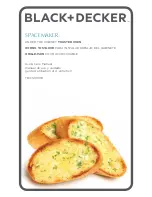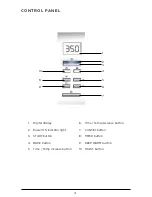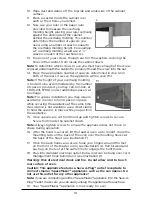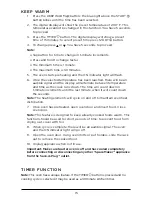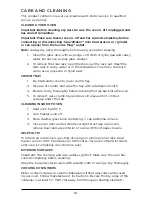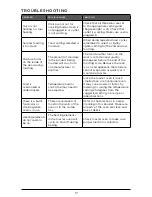
7
DETERMINE CABINET TYPE
Prior to taping the mounting template and beginning to drill your holes,
determine if your cabinet has a flat bottom (B) or an overhang molding (C).
If your cabinet is flat, follow
STANDARD INSTALLATION;
if the cabinet has
an overhang molding, refer to
OVERHANG MOLDING INSTALLATION.
STANDARD INSTALLATION (FLAT CABINET)
Important: Always wear protective glasses or goggles to prevent injury
when drilling.
1.
Clear countertop under installation area to avoid getting dust or
debris on other appliances or items. Open cabinets and remove
contents to make mounting easier.
2. Clean both the underside and topside of
the bottom panel of the cabinet.
3. With cabinet doors open, place
mounting template flush against
the surface of the underside of your
cabinet, making sure to align thick line
on template with bottom front edge of
your cabinet (D).
Important: Do not align screw holes on
template directly under the partition
between cabinets, as this will prevent you from installing the
appliance properly. Pay close attention to where the drill holes will
be set so as not to damage your cabinets during mounting. Drilling
through your cabinet’s partition may cause damage to cabinets
and prevent proper installation.
4. Fold the template along the edge of your cabinet so the thick line
is straight with bottom front edge; pull
template tight and tape down to hold
in place.
5. Drilling from under the cabinet up, drill
holes through the 4 places marked on
the template, using a
1
⁄
4
" drill bit (E).
Important: Always ensure you are drilling
straight up through the marked mounting
hole on the template. Drilling at an angle
may prevent proper installation and may
damage cabinets if the drill bit pierces the partition.
B
C
D
E

